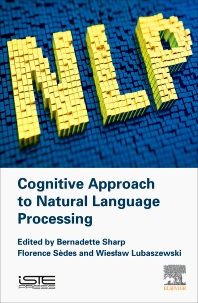Books in Computer science
Books in Computer science
The Computing collection presents a range of foundational and applied content across computer and data science, including fields such as Artificial Intelligence; Computational Modelling; Computer Networks, Computer Organization & Architecture, Computer Vision & Pattern Recognition, Data Management; Embedded Systems & Computer Engineering; HCI/User Interface Design; Information Security; Machine Learning; Network Security; Software Engineering.
- 1st Edition
- June 23, 2017
- Cameron H. Malin + 3 more
- English
- Paperback9 7 8 0 1 2 4 1 1 6 3 0 6
- eBook9 7 8 0 1 2 4 1 1 6 3 9 9

Deception in the Digital Age
- 1st Edition
- June 22, 2017
- Christophe Lalanne + 1 more
- English
- Hardback9 7 8 1 7 8 5 4 8 1 1 1 6
- eBook9 7 8 0 0 8 1 0 1 1 7 1 3

Biostatistics and Computer-based Analysis of Health Data Using SAS
- 1st Edition
- June 16, 2017
- Janis Osis + 1 more
- English
- Paperback9 7 8 0 1 2 8 0 5 4 7 6 5
- eBook9 7 8 0 1 2 8 0 9 3 5 3 5

Topological UML Modeling
- 1st Edition
- June 14, 2017
- Andrew P. King + 1 more
- English
- Paperback9 7 8 0 1 2 8 1 2 2 0 3 7
- eBook9 7 8 0 1 2 8 1 3 5 1 0 5

MATLAB Programming for Biomedical Engineers and Scientists
- 1st Edition
- June 13, 2017
- João Manuel Paiva Cardoso + 2 more
- English
- Paperback9 7 8 0 1 2 8 0 4 1 8 9 5
- eBook9 7 8 0 1 2 8 0 4 1 9 9 4

Embedded Computing for High Performance
- 1st Edition
- June 13, 2017
- Audrey Wanger + 5 more
- English
- Paperback9 7 8 0 1 2 8 0 5 3 5 1 5
- eBook9 7 8 0 1 2 8 0 9 2 3 8 5

Microbiology and Molecular Diagnosis in Pathology
- 1st Edition
- June 12, 2017
- Ivan Mistrik + 4 more
- English
- Paperback9 7 8 0 1 2 8 0 5 4 6 7 3
- eBook9 7 8 0 1 2 8 0 9 3 3 8 2

Software Architecture for Big Data and the Cloud
- 1st Edition
- June 8, 2017
- Fatos Xhafa + 2 more
- English
- Paperback9 7 8 0 1 2 8 0 9 8 5 9 2
- eBook9 7 8 0 1 2 8 0 9 8 6 5 3

Smart Sensors Networks
- 1st Edition
- June 5, 2017
- Zhouchen Lin + 1 more
- English
- Paperback9 7 8 0 1 2 8 1 2 7 3 1 5
- eBook9 7 8 0 1 2 8 1 2 7 3 2 2

Low-Rank Models in Visual Analysis
- 1st Edition
- May 23, 2017
- Bernadette Sharp + 2 more
- English
- Hardback9 7 8 1 7 8 5 4 8 2 5 3 3
- eBook9 7 8 0 0 8 1 0 2 3 4 3 3

Cognitive Approach to Natural Language Processing